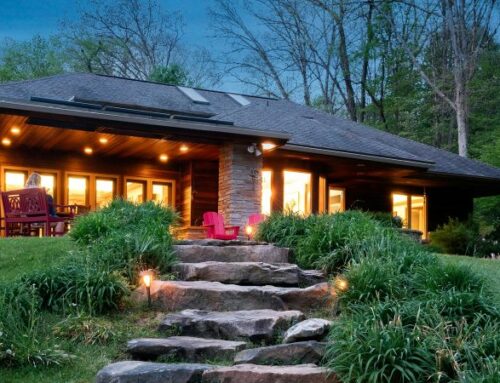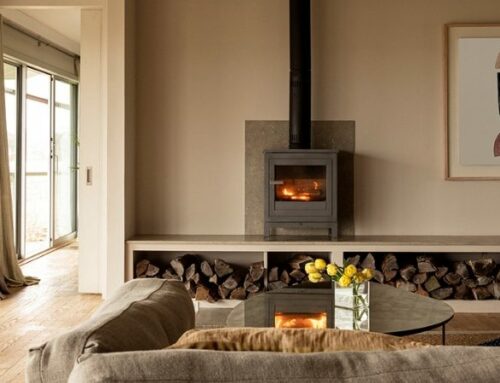Let’s face it: some of the homes in Nevada County are TINY. Many homes in Grass Valley and Nevada City are built on a smaller scale with a series of small rooms instead of open concept spaces. So maybe you need tips on how to decorate those spaces. Or maybe you just have that one cramped room you don’t know what to do with. In any case, there are a multitude of ways to create the illusion of spaciousness through decor.
Adopt a Monochromatic Color Scheme
Painting your walls, molding and window trim in the same neutral shade will allow for a smooth line of vision from floor to ceiling, eliminating any choppiness. Similarly, using multiple shades of one color for your furniture, throw pillows and other decorative pieces will create cohesion throughout the room and give the illusion of space. It will also make your house look more modern, and thus more appealing to visitors.
Get Furniture That Does Twice the Work
To get rid of superfluous furniture and clutter, incorporate extra storage in every possible aspect of the room. Invest in a coffee table that opens up to store blankets and magazines. Side tables with drawers or cabinets are a good place to stick remotes and media. When it comes to furniture in a small space, functionality is key—and this includes larger pieces, too.
Bring the Eye Up
Don’t sell your space short by ending the room at the top of your furniture. Take advantage of that wall space! This might mean installing floor to ceiling bookshelves, hanging artwork vertically or placing curtain rods all the way up to the crown molding. Much like in fashion, anything vertical is elongating. Use that philosophy for your home decor.
Open the Space with Tile Flooring
Laying large tile flooring with narrow grout lines tricks the brain into seeing a larger space, adding to the illusion of an open and airy room. Also, consider the placement and pattern during install. Square tiles set at a 45-degree angle or rectangular tiles installed perpendicular to you as you enter the room force the widest part to get noticed first, thus allowing the eye to follow to the back of the room. Go for a light shade if your style is modern and sleek, or explore a simple, dark pattern that will add contrast to a neutral wall.
Create Seamless Room Transitions
Avoid choppy sightlines between rooms in your home by considering all the ways you can blend the spaces together. Sticking with the same color story on the walls and continuing the same flooring instantly connects rooms, giving the impression of one large space rather than two or three smaller ones. Laying down a rug between rooms serves a similar purpose without the commitment of a total flooring change.
Give Up Your Window Treatments
While hanging floor-to-ceiling curtains adds to the appearance of vertical lines, skipping out on window coverings completely can dramatically lighten a room by removing excess fabric weighing down the space and allowing for more natural light. You’d be surprised how much bigger your windows and walls will feel.
Give Each Piece Breathing Room
An old standby rule is to use small furniture in a small space, but you don’t need to throw out your favorite statement piece just to please the design gods. Oversized furniture can still work as long as it doesn’t have to compete with other bulky items. Try placing furniture at an angle and using pieces that have exposed arms and legs. Both options help to create a sense of air around each piece, making the room feel more spacious.
Focus On Streamlining
Even if you want to break every design rule in the book, the key to faking a bigger room in a smaller space is to give in to decluttering—at least where the eye is concerned. Whether you accomplish this by grouping like items together using a single color scheme or actually removing items altogether, each trick is designed to help the eye see the space as a whole and not the tiny details that break it apart.





